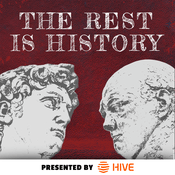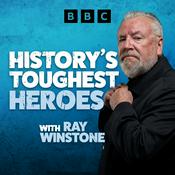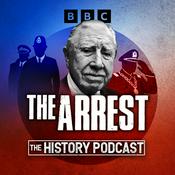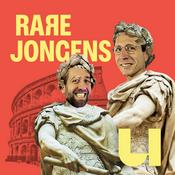The Bowery Boys: New York City History
Tom Meyers, Greg Young

Nieuwste aflevering
Beschikbare afleveringen
5 van 537
- The Great Fire That Transformed New YorkThis month marks the 190th anniversary of one of the most devastating disasters in New York City history — The Great Fire of 1835.This massive fire, among the worst in American history in terms of its economic impact, devastated the city during one freezing December evening, destroying hundreds of shops and warehouses and changing the face of Manhattan forever.It also underscored the city’s need for a functioning water system and a permanent fire department.So why were there so many people drinking champagne in the street? And how did the son of Alexander Hamilton save the day?PLUS We give you a another reason to check out the Stone Street Historic DistrictTo mark this special anniversary, we have newly remastered and edited our classic Bowery Boys podcast on this subject which was originally released on March 13, 2009This episode was produced by Kieran Gannon Hosted by Simplecast, an AdsWizz company. See pcm.adswizz.com for information about our collection and use of personal data for advertising.--------34:56
- #474 Made in France: The Statue of Liberty’s Forgotten Origin StoryShe stands in New York Harbor as America’s most recognizable symbol—but the story of the Statue of Liberty begins thousands of miles away, in the charming Alsatian city of Colmar, France.In this special on-location episode, Tom ventures to the picturesque town where sculptor Frédéric Auguste Bartholdi was born in 1834. Walking through Colmar’s cobblestone streets and half-timbered facades, Tom sits down with Juliette Chevée, curator of the Musée Bartholdi, to uncover the French side of this iconic American monument.Who was Bartholdi? What did the statue originally mean to the French republicans who conceived it at an 1865 dinner party? How did a rejected Egyptian lighthouse design become the template for Liberty’s form?And how did two Frenchmen—Bartholdi and the historian Édouard de Laboulaye—manage to convince a foreign country to accept a colossal structure without any government assistance from either France or the United States?This episode was produced and edited by Kieran Gannon Hosted by Simplecast, an AdsWizz company. See pcm.adswizz.com for information about our collection and use of personal data for advertising.--------1:21:33
- The Last Ships From Hamburg: An Immigration StoryOur second in a series of podcasts about New York City and American immigration history. Between the late 1890s and early 1920s, over 2 million Jews from Eastern Europe fled their homes and made the long journey to America, escaping persecution and violence in their native countries. Many were fleeing state-sanctioned antisemitism in Russia.This mass immigration effort was, in large part, brought about by three entrepreneurial men: Albert Ballin, the director of the Hamburg-America line; Jacob Schiff, the German-born New York-based philanthropist and financier; and the Gilded Age financial titan J.P. Morgan.It is through the research and writing of historian Steven Ujifusa that many details of this story have finally been brought to light in his book The Last Ships from Hamburg: Business, Rivalry, and the Race to Save Russia's Jews on the Eve of World War I. In this special presentation of the Gilded Gentleman podcast, Steve joins Carl to discuss these momentous events. In addition, Steve shares his personal story about how he uncovered little-known material to bring this history to life. Check out last week's show on Ellis Island after you've listened to this one. Hosted by Simplecast, an AdsWizz company. See pcm.adswizz.com for information about our collection and use of personal data for advertising.--------57:27
- #473 The Other Side of Ellis IslandEllis Island is one of America’s great landmarks, a place in New York Harbor that represents the millions of people who arrived in this country during the late 19th and early 20th centuries. The north side of Ellis Island, now operated by the National Park Service as the Ellis Island National Museum of Immigration (part of the Statue of Liberty National Monument), saw nearly 12 million immigrants processed between 1892 and 1954. Part of the "processing" involved medical and mental health tests. Most people passed successfully, then boarded a ferry to the mainland — and a new life.But some were kept behind, those who did not pass those tests. They were then sent to the other side of Ellis Island.In this special episode, sponsored by Founded By NYC, Greg and Tom recount the history of immigration into New York during the 19th century and the founding of Ellis Island in the 1890s. Then they pay a visit to ‘the other side’ — the Ellis Island Immigrant Hospital — with Justin Southern and Jim Dessicino of Save Ellis Island.This non-profit leads hard-hat tours through these spectacular and unique ruins.Visit the website to see more images from today's show. This episode was edited and produced by Kieran Gannon.Read all about New York City during the holiday season and all the other exciting events and world-class institutions commemorating the five boroughs’ legacy of groundbreaking achievements, and find ways to celebrate the city that’s always making history at Founded By NYC. Hosted by Simplecast, an AdsWizz company. See pcm.adswizz.com for information about our collection and use of personal data for advertising.--------1:25:54
- The Rockefeller Center Christmas Tree: A History in LightsThe Rockefeller Center Christmas tree has brought joy and sparkle to Midtown Manhattan since the early 1930s. The annual festivities may seem steady and timeless but this holiday icon actually has a surprisingly dramatic history.Millions tune in each year to watch the tree lighting in a music-filled ceremony on NBC, and tens of thousands more will crowd around the tree’s massive branches during the holiday season, adjusting their phones for that perfect holiday selfie.But the Rockefeller Center Christmas Tree is more than just decor. The tree has reflected the mood of the United States itself — through good times and bad.The first tree at this site in 1931 became a symbol of hope during the Great Depression. With the dedication of the first official Christmas tree two years later, the lighting ceremony was considered a stroke of marketing genius for the grand new “city within a city” funded by JD Rockefeller Jr.The tree has also been an enduring television star — from the early years in the 1950s with Howdy Doody to its upgrade to prime time in the 1990s.Join Greg for this festive holiday history featuring kaleidoscopic lighting displays, painted branches, whirling snowflakes, reindeer and a very tiny owl.Please enjoy this newly edited and remastered version of our 2021 show on New York City's most famous Christmas tree and the surprisingly fascinating story of how its annual lighting became a national event.And check out this list of New York City holiday activities, provided by Founded by NYC Hosted by Simplecast, an AdsWizz company. See pcm.adswizz.com for information about our collection and use of personal data for advertising.--------47:18
Meer Geschiedenis podcasts
Trending Geschiedenis -podcasts
Over The Bowery Boys: New York City History
The tides of American history lead through the streets of New York City — from the huddled masses on Ellis Island to the sleazy theaters of 1970s Times Square. The elevated railroad to the Underground Railroad. Hamilton to Hammerstein! Greg and Tom explore more than 400 years of action-packed stories, featuring both classic and forgotten figures who have shaped the world.
Podcast websiteLuister naar The Bowery Boys: New York City History, De Ongelooflijke Geschiedenis en vele andere podcasts van over de hele wereld met de radio.net-app

Ontvang de gratis radio.net app
- Zenders en podcasts om te bookmarken
- Streamen via Wi-Fi of Bluetooth
- Ondersteunt Carplay & Android Auto
- Veel andere app-functies
Ontvang de gratis radio.net app
- Zenders en podcasts om te bookmarken
- Streamen via Wi-Fi of Bluetooth
- Ondersteunt Carplay & Android Auto
- Veel andere app-functies


The Bowery Boys: New York City History
Scan de code,
download de app,
luisteren.
download de app,
luisteren.




























